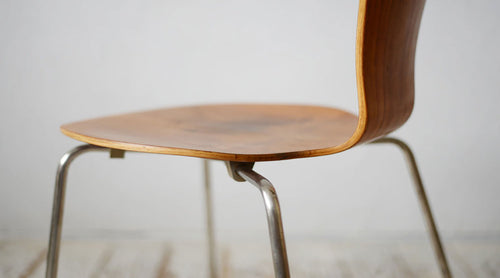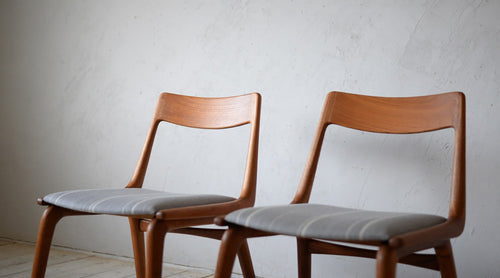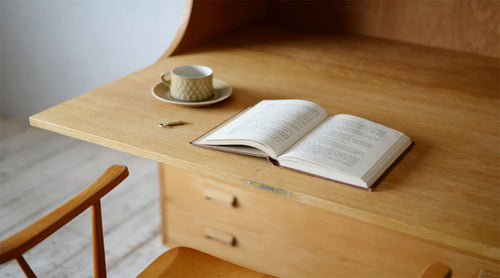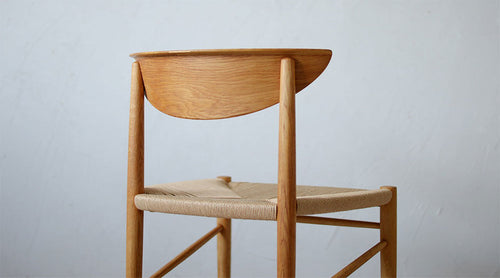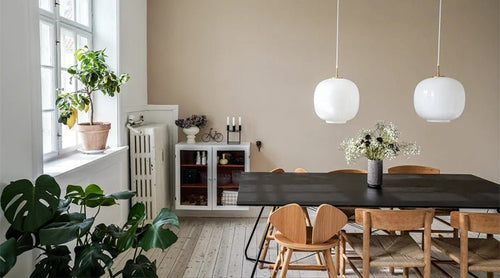- アイテム紹介
- 家具選びのポイント
The charm of simplicity J39
Hello everyone, this is Okada from the Daikanyama store.
It's been three months since I joined Greenwich.
Of course you can be surrounded by your favorite interior,
I find my job every day rewarding and enjoyable, being able to propose new ways of living to everyone.
What I noticed after experiencing many different interiors:
That means that every piece of furniture has a story.
What kind of designer created it, and what was their intention?
Where and when was it made?
No two pieces have the same background, and each one has its own unique character.
For example, when choosing a chair,
Of course, the feeling that "I just like the design" or "It feels comfortable to sit on" is very important,
I think knowing the story behind the chair makes it even more appealing.
By getting to know it, you will grow to love it more. You will want to keep using it forever.
A few years later, I think it was a good purchase.
If you feel that way, I would be happy if I could help you.
So this time, we'd like to introduce you to a chair with a story behind it!
Børge Mogensen J39
The J39 is the work of Danish designer Borge Mogensen.
Affectionately known as "The People's Chair," this is a best-selling Danish chair that has been loved for many years.
Apparently it's so famous in Denmark that there's no one who doesn't know about it.
It's rare to find a chair like that in Japan that everyone knows, so this just goes to show how conscious the Danish people are about interior design.
This background is one of the reasons why I would like to recommend it to you all now!
This is what Mogensen is like.

Børge Mogensen is known as one of the leading figures in modern Danish furniture design.
From 1942 he worked as product design manager for FDB Möbler (the furniture division of the Danish Co-operative Society).
Hans J. Wegner, famous for the Y chair, may be better known in Japan.
Mogensen seems to be equally well known in Denmark.
By the way, Mogensen and Wegner are the same age and are very good friends.
They sometimes cooperated to create products and sometimes competed with each other, and they were apparently very close friends both in private and public life.
For interior design lovers, this is the best combination ever. It's divine.
Mogensen's belief is to "provide simple, practical furniture at reasonable prices."
Mogensen is often described as "simple and sturdy."
The design is timeless and unadorned. The straight lines, which are the brand's forte, exude a sense of unwavering strength.
(Personal opinion)
If I could give an easy-to-understand example of Mogensen's design...
Speaking of breakfast, it's a simple Japanese breakfast.
Rather than the fancy Western-style breakfasts served at hotels (like pancakes topped with lots of fruit),
It's like the breakfast of white rice and miso soup (made with proper stock) that I have every day at home.
It's never flashy, but it always gives you a sense of security.
It is this simplicity that allows the quality of the material to shine through.
The eternal standard

The J39 was created by Mogensen.
Of the many attractions, if I had to narrow it down to three,
The first thing I would like to mention is that it is "the eternal standard."
In 1942, Mogensen joined FDB Möbler (the furniture division of the Danish Co-operative Society) and was given a task.
That means " a durable, beautiful, functional and affordable chair that will be loved by the Danish people for a long time ."
The J39 is the product that was created over a period of five years.
Five years on one chair... This shows Mogensen's sincerity and uncompromising attitude towards his work.

The demand for this type of chair was due to the social situation at the time.
After the war, as people moved from rural areas to urban areas, land gradually became scarce and apartment complexes began to proliferate.
In this situation, there was a demand for compact furniture that could be used in small rooms.
It was simple, durable furniture that anyone could afford.
The J39 was created in this way, with an "extremely simple, lean design."
It is made up of the bare minimum of parts and has no excessive decoration.
A lightweight and sturdy chair that anyone can use.
Its distinctive feature is that it has no outstanding features, making it a very standard chair.
It's not trendy, and it's not quirky.
That is why it has been and will continue to be loved forever.
This "eternal standard" is the first attraction.
Respecting tradition: "Redesign"

The second attraction is that it is a work born from redesign.
Redesign is a philosophy advocated by Kaare Klint, known as the father of modern Danish furniture.
The idea is to "reexamine historical designs, learn their practicality from daily life, and create designs that fit into the lifestyles of the time."
Mogensen, who studied under Klint, faithfully inherited his teachings.
The J39 was also born from this "redesign."

J39 redesigned a chair originally used in American Shaker churches.
It retains the straight legs that are characteristic of Shaker furniture and its simple construction that requires no special tools for assembly, while eliminating all waste.
 The Shaker-style ladder-shaped back panel has been redesigned into a large single piece of board.
The Shaker-style ladder-shaped back panel has been redesigned into a large single piece of board. We also pay particular attention to seating comfort.
The paper cord seat is inclined to reduce strain on the body when sitting back.
The simplicity of Shaker furniture has been made even simpler, and functional from the perspective of the common people of the time.
This chair perfectly embodies the concept of "an inexpensive, high-quality chair that will be loved by ordinary people for a long time."
People-friendly manufacturing

The third and final point is that it is a chair that enriches the lives of everyone involved.
The "common people" in "chairs for the common people" refers to
They were not only the people who used the chair, but also the people who made it.
The J39 uses paper cord that must be hand-woven.
Mogensen chose to use paper cord for the seat, which requires manual labor, in order to create jobs in his home country after the war.
He then asked ordinary people to help him make chairs, paying them a commission-based wage, thereby ensuring their livelihood.
FDB Möbler, where Mogensen served as the first head of planning and design.
The purpose of its establishment was to improve the standard of living of consumers through the interior design business.
In addition to its literal role of interior design, "making furniture that is easy for ordinary people to use,"
This means that they supported people's lives in terms of labor as well, by "making furniture that could be done by ordinary people."
The fact that this chair contributes to society is what makes it so appealing and not found in other furniture.
How was it?
At first glance, it appears to be a simple chair.
But when you learn the story, you want to take a closer look at it.
I would be happy if this helps you choose a wonderful interior piece.
Daikanyama store Okada

